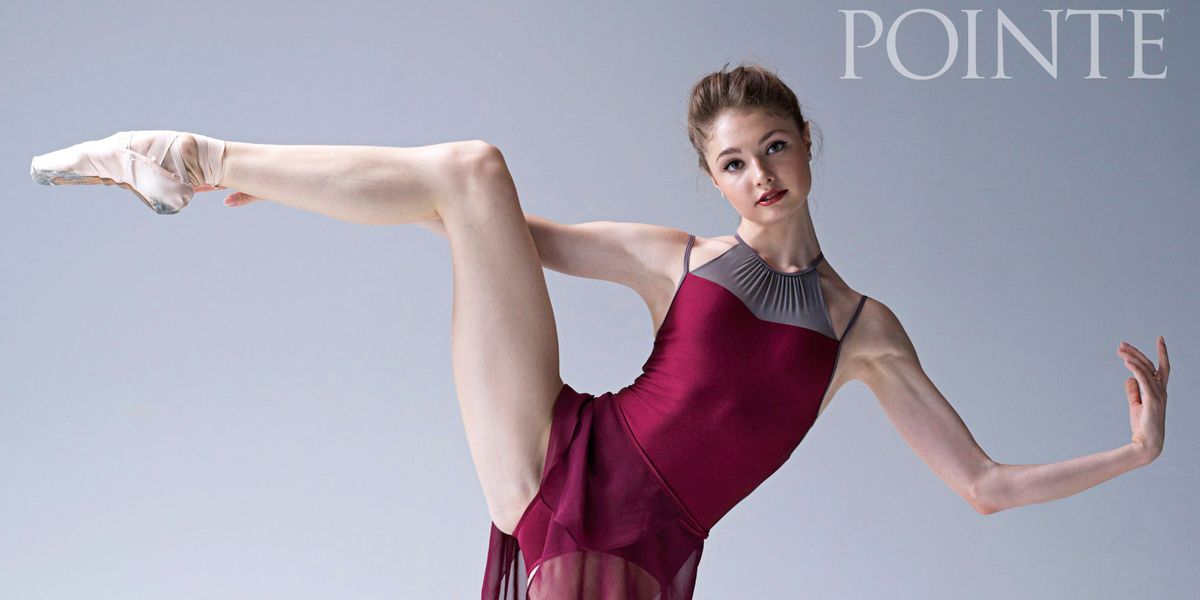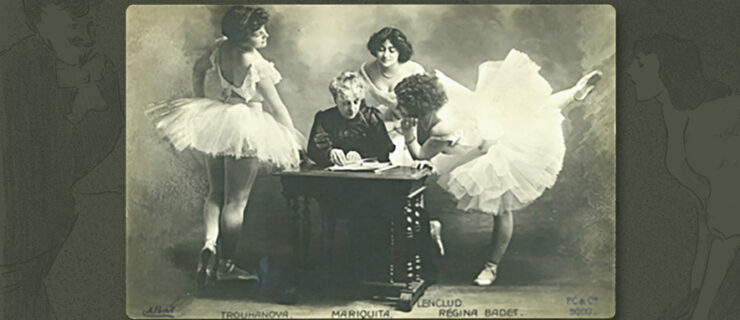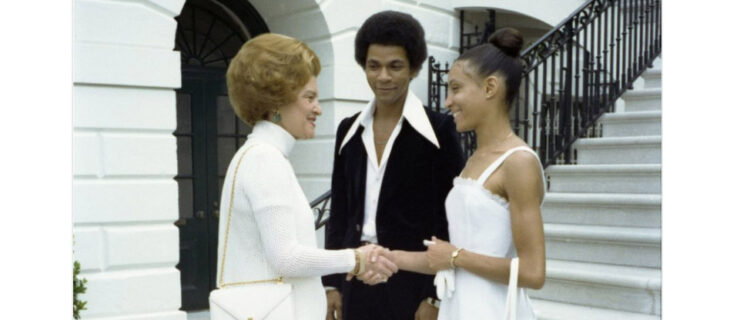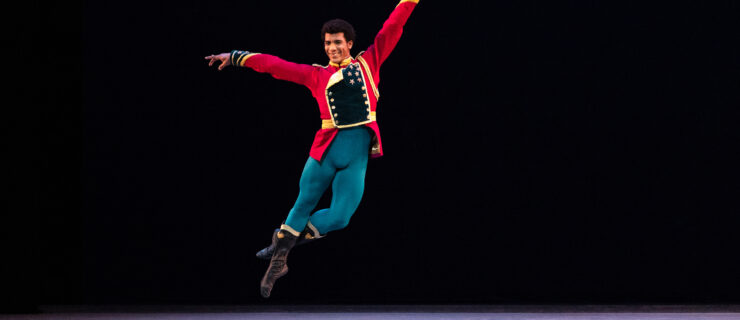Grace Under Pressure: The Bolshoi Ballet's Alena Kovaleva
This is Pointe’s December 2017/January 2018 Cover Story. You can subscribe to the magazine
here, or click here to purchase this issue.
Few ballets are as unforgiving for a young dancer as Swan Lake. Both Odette’s heartbreak and Odile’s deceit of Siegfried demand the kind of dramatic commitment and maturity that often come with experience. At the same time, when a director entrusts an 18-year-old corps de ballet member with the double role, the implicit promise is clear: A special ballerina will emerge from that chrysalis.
So it was with Alena Kovaleva, who turned 19 shortly after her Swan Lake debut, last September, on the historical stage of the Bolshoi Ballet in Moscow. Barely a year after her graduation from the Vaganova Ballet Academy, Kovaleva isn’t a full-fledged Swan Queen yet. At nearly 5′ 10″, she is so tall that her coltish limbs sometimes falter, and she was visibly tiring by Odette’s final pleas.
 Kovaleva in “Swan Lake.” Photo by M. Logvinov, Courtesy Bolshoi Ballet.
Kovaleva in “Swan Lake.” Photo by M. Logvinov, Courtesy Bolshoi Ballet.
Yet when she first appeared in the white act with an ample grand jeté, her arms stretching into a gorgeously lyrical wingspan, it was clear that Makhar Vaziev, the Bolshoi’s ballet director who had thrown Kovaleva in the deep end, was on to something. Kovaleva’s filigree Vaganova training shone through, her doll-like face alive with sadness.
Vaziev is no stranger to pushing young talent beyond their comfort zone. The Russian director came to the Bolshoi in 2016 after long spells at the helm of La Scala Ballet and the Mariinsky Ballet, where he jump-started the careers of ballerinas including Alina Somova and Olesya Novikova in similar fashion. At the Bolshoi, which favored slower rises through the ranks in recent years, his methods are leading to a change of the guard, with Kovaleva one of the fresh faces of his directorship.
“It doesn’t matter to me if someone is young or not so young,” Vaziev says. “If he or she is the best, they will dance.” Last July, he even cast Kovaleva in “Diamonds” at Lincoln Center for the 50th anniversary of Balanchine’s Jewels. Her New York City debut didn’t go unnoticed, with the Observer‘s dance critic Robert Gottlieb raving about its “ravishing splendor.”
In his Moscow office after Swan Lake, Vaziev declared himself satisfied with his young charge: “Today was just a step. I think she did—not bad.” Kovaleva herself, poised despite the exhaustion, admitted in near-impeccable English that leading her first full-length ballet was no walk in the park. “You have to hold yourself, to find this energy inside you. But the energy comes from the character. Every movement needs to be part of the story.”
 Photo by Nisian Hughes for Pointe.
Photo by Nisian Hughes for Pointe.
Growing Pains—and Gains
The height that gives her such breadth of movement onstage hasn’t always been an advantage. When the St. Petersburg–born Kovaleva entered the Vaganova Academy, at age 7, she struggled to build up strength. “I was really weak for the first five years. My legs were just two sticks without muscles,” she says with a laugh. “My teachers were always telling me: Eat pasta, pasta, pasta!”
Kovaleva had almost given up her spot at the Academy. When she auditioned on a teacher’s suggestion, she was shocked by the anxious stage mothers waiting for their children and told her family, who was far removed from the dance world: “I don’t want to go here. These people are not normal. Everybody was shouting, crying.”
Still, she fell in love with the art form and thrived, completing three years of preparatory classes and the regular eight-year curriculum. “It’s a really good school—it doesn’t just make your technique, but also your character,” she says. Kovaleva’s final Vaganova teacher was Yulia Kasenkova, a former Mariinsky soloist who stood out for her technical strength and clarity of phrasing, and demanded the same of her students. “We were her very first class. She had just finished her career, so she remembered everything really well.”
 Photo by Nisian Hughes for Pointe.
Photo by Nisian Hughes for Pointe.
Fully aware that her height might deter some companies, Kovaleva started thinking about the future early. In 2016, she entered the Prix de Lausanne, where she didn’t make the finals with her two variations but relished the experience: “It was important for me to try contemporary dance, because I didn’t have it at Vaganova, and I met so many people,” she says.
The connections she made helped her bounce back when the Mariinsky Ballet, after some dithering, declined to hire her because she was too tall: “I understood that I probably wouldn’t get there, so I tried to do as many auditions as I could.” After Lausanne, she got offers from St. Petersburg’s Mikhailovsky Ballet and Eifman Ballet, as well as scholarships from Béjart Ballet Lausanne and Dutch National Ballet.
In Moscow, around the same time, Vaziev got a phone call from reconstruction specialist Sergei Vikharev, who had noticed Kovaleva (and unfortunately passed away last June). “He told me there was a very capable girl graduating, but the Mariinsky wouldn’t take her. I said, ‘It means she’s no good!’ But he asked if I could watch her,” Vaziev remembers.
Kovaleva went to Moscow to take class, and Vaziev was struck by her potential. “It was a shock for me that the Mariinsky didn’t want her,” he says.
Kovaleva didn’t think twice before accepting his offer of a corps position. Despite the historical rivalry between St. Petersburg and Moscow, the young dancer was excited by the prospect of expanding her horizons. “When you graduate, a new adult life starts, and moving to another city made it more real,” she says.
 Kovaleva with her regular partner Jacopo Tissi, a young talent from Milan, in “Swan Lake.” Photo by M. Logvinov, Courtesy Bolshoi Ballet.
Kovaleva with her regular partner Jacopo Tissi, a young talent from Milan, in “Swan Lake.” Photo by M. Logvinov, Courtesy Bolshoi Ballet.
A Swan Is Born
She had no time to worry: On her second day at the Bolshoi, Kovaleva was called to an impromptu rehearsal with Vaziev’s wife, Olga Chenchikova, a former Mariinsky principal who is now her coach. “It was for ‘Diamonds.’ I couldn’t believe it,” Kovaleva says. Three weeks later, she was making her stage debut in Balanchine’s ballet. “Even after the performance finished, I felt like I was dreaming,” she remembers.
Other debuts have come thick and fast, from Myrtha to the grand pas from Raymonda and Études. While the Moscow style is notoriously more flamboyant than the reserved manner taught in St. Petersburg, Kovaleva doesn’t want to stray too far from her roots. “I’m trying to stay who I am, like I was taught.” Still, she looks up to the Bolshoi’s prima ballerinas and appreciates the dancers’ openness, both onstage and off: “I felt welcomed and supported. I have really friendly colleagues.”
 Photo by Nisian Hughes for Pointe.
Photo by Nisian Hughes for Pointe.
Kovaleva is keen to improve her technique—”all my technique”—and often does exercises to strengthen her feet and core. Chenchikova, who used to coach the equally leggy Somova and Ekaterina Kondaurova in St. Petersburg, is also passing on some tricks. “She tells me you have to imagine that you’re really small, and that you’re moving your legs really fast,” Kovaleva says.
For respite from her workload, Kovaleva generally turns to books, with Hemingway, Fitzgerald and Remarque among her favorites. She spent her vacation between Jewels in New York City and Swan Lake resting in the south of France, where her godmother lives, and explores Moscow whenever the Bolshoi’s schedule allows.
For now, however, she is content to work hard and attempt to live up to Vaziev’s expectations. Her director praises her intelligence and strong character; impressively, despite her young age, her Odette/Odile betrayed no anxiety at the pressure that has been heaped upon her. “You can’t be afraid while you’re dancing, because it’s what you’re killing yourself for in rehearsal,” Kovaleva says. “The stage is my place, where I can open up for the world, for the audience.” The Bolshoi’s new swan is here to stay.





